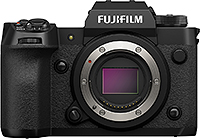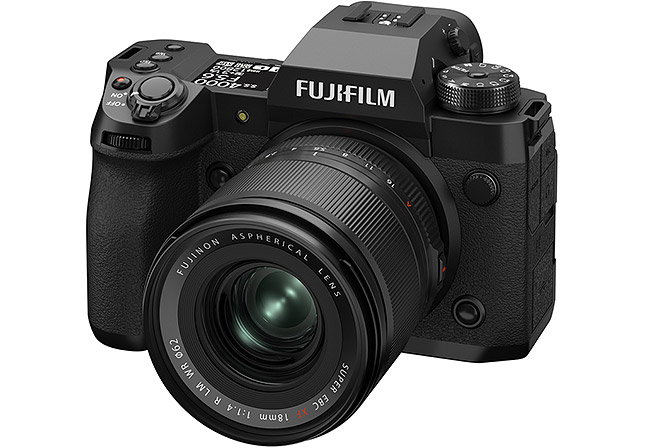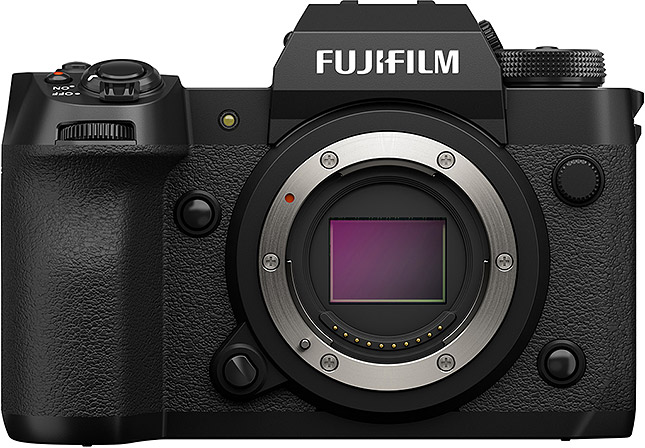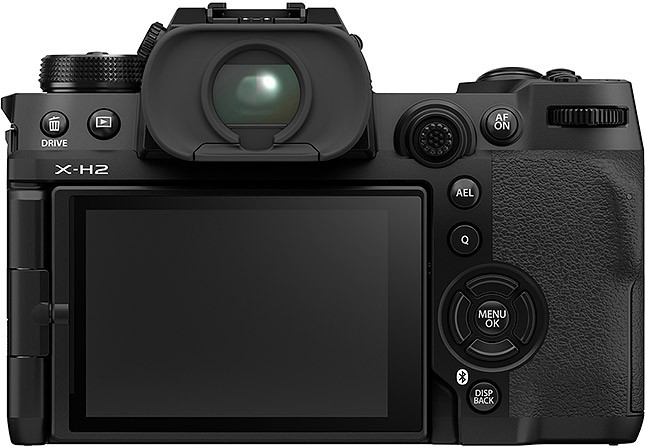Fujifilm debuts new flagship X-H2 with the world’s first 40-megapixel APS-C sensor
posted Thursday, September 8, 2022 at 2:00 PM EST

At Fujifilm's X-Summit NYC 2022 event, the company unveiled its second flagship X Series mirrorless camera, the X-H2. A twin in terms of design and handling to the recently announced high-performance Fuji X-H2S, the new Fuji X-H2 focuses on resolution in a big way, using an all-new 40MP X-Trans sensor. With its new 40.2-megapixel X-Trans CMOS 5 HR image sensor, the X-H2 is now the highest-resolution APS-C camera on the market, making it an ideal choice for high-res photographic pursuits such as portraiture, landscapes, architecture and even wildlife.
When it comes to the design of the X-H2, as mentioned, it's identical to the X-H2S. Both cameras share the exact same body design. They really are twin flagship cameras, give you the option to pick the one that suits you the best: high-speed performance, or a more generalist or versatile option with high-res imaging capabilities.

In terms of design details, the X-H2, like the X-H2S, opts for a more conventional SLR-styled mirrorless camera design, especially when it comes to the control layout. Gone are the dedicated mechanical controls for ISO and Shutter Speed that we usually see on Fujifilm X Series cameras. Instead, the X-H2 features a familiar PASM-style control dial along with dual front and rear control dials for settings adjustments. The camera also has a dedicated ISO button, much like you see on other digital cameras. While some might see it as removing a bit of the "charm" of Fujifilm X Series cameras, the X-H2 still has the heart of a Fujifilm camera but it's now more approachable and more familiar to those used to other brands of cameras.
The X-H2 also features a sizable, deep handgrip for excellent ergonomics and comfort, particularly when using longer, heavier lenses. The body construction is designed for durability and to withstand the rigors of professional use, with thorough dust- and moisture-resistance sealing throughout. The EVF and LCD both get pleasing upgrades with higher-resolution displays. The EVF features a higher-res 5.76M dot display, up from 3.69M dots on the X-H1, and has a higher 0.8x magnification and the ability to have a 120fps refresh rate. The LCD meanwhile is now a more conventional vari-angle design, making the camera more suitable for video, and the display resolution has been upped to 1.62M dots from 1.02M dots in the X-H1.

The X-H2's high-res 40MP X-Trans CMOS 5 HR image sensor is paired to the same high-performance X Processor 5 chip as we have in the X-H2S, giving the camera all-around excellent, nimble performance. As expected, the X-H2 can't shoot as fast as the X-H2S in every shooting mode, but it's no slouch either. With the mechanical shutter, the X-H2 matches the X-H2S with a 15fps maximum full-res burst shooting speed. If you switch to the electronic shutter, however, the maximum speed dips compared to its sibling camera. The X-H2 tops out at 20fps with the electronic shutter, half of what the X-H2S can do. Further, the 20fps burst mode on the X-H2 forces a slight 1.29x crop. The X-H2's sensor and processor are fast, but it can't compete with the higher readout speed of the X-H2S's specialized stacked CMOS sensor.
The Fuji X-H2 does have a new, exclusive trick up its sleeve: a high-res Pixel Shift shooting mode. Thank's to its powerful in-body image stabilization system, the X-H2 can create 160-megapixel composite images all in-camera. This tripod-based high-res mode captures an impressive 20 frames in quick succession all while the camera's IBIS unit moves the image sensor 0.5 pixels between each frame!

For video creators, the Fujifilm X-H2 is also packed with a pleasing array of high-end features, including 8K internal recording at up to 30p (something the lower-res X-H2S is not capable of), internal Apple ProRes recording at 8K, 12-bit 8K RAW out via HDMI, 4K up to 60p and Full HD up to 120fps. The X-H2 also includes F-Log2 support, just like the X-H2S. However, the dynamic range here is slightly less than that of its lower-res sibling with "just" 13+ stops of dynamic range with F-Log2 rather than the 14+ stops offered on the S model.
Other features include up to 7 stops of IBIS performance, built-in digital teleconverter modes for still shooting (1.4x and 2x), 2x digital zoom with 4K video, faster built-in wireless communication, webcam and live streaming video support and 5G smartphone tethering.
The Fujifilm X-H2 is set to go on sale at the end of September 2022 with a body-only retail price of $1999, which is $500 less expensive than the high-speed Fuji X-H2S model. For more details on the new Fujifilm X-H2, check out our in-depth Fuji X-H2 Preview.